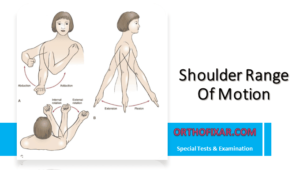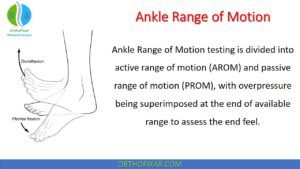AI in Orthopedic Diagnosis & Treatment

Artificial intelligence is rapidly changing the face of healthcare, introducing the highest accuracy and efficiency in healthcare diagnostics and treatment. AI in orthopedics is becoming an effective tool, where it is important to identify early in the course of the disease and intervene precisely. Technology of AI in Orthopedic is assisting healthcare professionals in improving overall care and making it better, faster, and more personalized, even in diagnosing bone fractures and boosting surgical procedures.
Orthopedic expertise is not going to be replaced by AI; rather, it will be complemented by it. AI in Orthopedic can help doctors make more informed decisions by providing a more accurate diagnosis and crafting personalized treatment plans by reading and sorting large data volumes in a fraction of a second and identifying patterns that might not otherwise be apparent using only a human eye.
AI-Powered Diagnostic Tools
Diagnostic imaging is one of the most effective applications of AI in orthopaedics. There are machine learning models that are configured and trained to detect abnormalities in X-ray, MRI, and CT scans with astonishing precision. These systems have the potential to detect small hairline fractures, misalignments in joints and signs of nearing diseases such as arthritis, at times quicker than the standard techniques.
By integrating AI and imaging platforms, healthcare providers can automate image analysis, prioritize urgent cases, and reduce diagnostic delays. This not only streamlines workflows but also ensures patients receive timely and precise care.
AI-Enhanced Communication and Documentation Tools
Effective communication and documentation are crucial in delivering high-quality orthopedic care. With the rise of AI and digital health platforms, healthcare teams are increasingly turning to smart tools that streamline collaboration and patient education. While advanced imaging and surgical systems handle the clinical side, administrative workflows also benefit from technology.
Platforms like Canva Docs allow orthopedic professionals to create visually organized documents for case reviews, interdisciplinary coordination, or patient-facing materials. These documents can combine visuals, notes, and structured layouts, helping teams communicate more clearly and patients better understand their treatment plans.
Though not a clinical tool, Canva Docs supports the digital transformation of healthcare by making medical communication more accessible, polished, and efficient, especially for non-technical audiences.
AI in Orthopedic Treatment Planning
Patients are not the same, and AI does not treat them as such. Next-generation algorithms will work with the combination of clinical histories, germ-level signatures, imaging scans and past results to come up with customized treatment plans. When it comes to working with a sports-related injury or thinking about a joint replacement surgery, AI can provide new information to guide doctors in selecting the best and least invasive course of action.
Predictive analytics are important here. The AI models will be capable of predicting possible complications, the time of recovery, and even the rehabilitation program. This aids orthopedic teams in making data-driven decisions that are unique to the patient, helping to improve the quality of care.
Robotics and Automated Surgery Assistance
AI is also reshaping the operating room. Robotic-assisted surgery, powered by AI-driven precision, is becoming more common in complex orthopedic procedures like hip and knee replacements. These systems assist surgeons by providing real-time guidance, ensuring accurate incisions and implant placements.
Robots in surgery promote better surgical outcomes and shorter stays in the hospital by eliminating human error and minimizing invasiveness. The surgeons have the same level of control, only now they have the additional benefit of insights provided by AI and the ultra-precise tools.
Post-Treatment Monitoring and Rehabilitation
The role of AI in Orthopedic doesn’t end in the operating room. In post-treatment care, AI applications continue to support both patients and providers. Wearable devices equipped with motion sensors track patient activity, range of motion, and adherence to physical therapy routines. AI analyzes this data to monitor progress and identify deviations from expected recovery patterns.
Rehabilitation protocols can then be adjusted in real-time based on patient-specific feedback. This data-driven approach leads to faster healing, reduces the risk of re-injury, and keeps patients actively engaged in their recovery journey.
Future Trends and Challenges
The development of AI in Orthopedic surgery will change orthopedic specialty just as the use of AI shifts. The real-time diagnostic apps, full automation of surgical planning, and even virtual physical therapy under the guidance of an AI avatar may become the innovations of the future.
Nonetheless, the fast-paced implementation of AI also brings a few ethical and clinical concerns. Responsible implementation would demand providing transparency, safeguarding the privacy of patient data and creating a balance between technology and human judgment. Above all, AI solutions cannot and should not substitute the clinical experience of orthopedic professionals.
Conclusion
AI in Orthopedic is revolutionizing in patient care from diagnosis to rehabilitation. Through intelligent diagnostics, personalized treatment plans, robotic-assisted surgeries, and real-time recovery monitoring, it empowers healthcare providers to deliver higher-quality, patient-centric care.
- Lifetime product updates
- Install on one device
- Lifetime product support
App Features:
- Lifetime product updates
- Install on one device
- Lifetime product support
App Features:
- Lifetime product updates
- Install on one device
- Lifetime product support
App Features:
- Lifetime product updates
- Install on one device
- Lifetime product support










